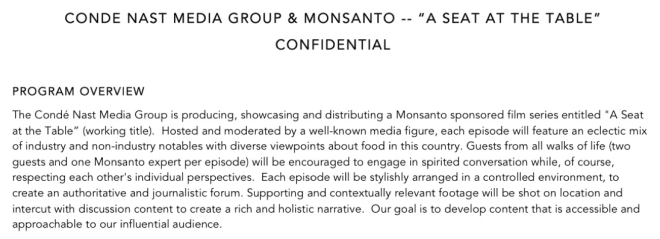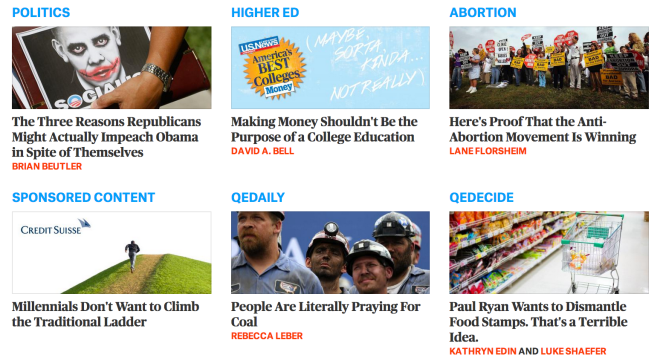The enmeshment of the new media site with corporate interests – in which Vox writes ad-copy for big companies, while also claiming to cover them objectively – is not new to Ezra Klein:
GE provided crucial support for media startup Vox.com, an explanatory-journalism site launched by former Washington Post blogger Ezra Klein, with whom it already had a working relationship. While Mr. Klein was still at the Post, GE courted him and others for a news website and marketing campaign in development. When Mr. Klein left to join Vox, GE and its ad dollars followed. The GE site, launched after Mr. Klein left the Post, aggregated video clips and content featuring the blogger, along with Fox News’s Bret Baier, Politico’s Mike Allen and others, discussing and expounding on the news.
The advertiser had “absolutely zero influence” on Vox.com’s editorial content, said Jim Bankoff, chief executive of parent company Vox Media. But both GE and Vox have a similar audience in mind: young, relatively affluent and policy savvy. For GE, the purpose of the relationship was to get GE in the minds of policy makers and lawmakers on Capitol Hill. “We want to target the DC millennials,” said Linda Boff, who heads GE’s global brand marketing. The Vox sponsorship ended in August.
The merger of corporate interests and what’s left of journalism is only getting deeper. And the younger generation of liberal journalists is leading the way, and is shocked, shocked that anyone might question the appearance of blatant conflicts of interest. But a reader wants to make a distinction:
In your post “Ezra Sells Out“, you seem to be confusing Vox, which is Ezra Klein & Co’s media venture, with Vox Media, the overarching company that owns Vox.com along with a number of other media outlets like Polygon and Curbed.
I don’t disagree with the brunt of your post, but it seems a bit underhanded to title the post “Ezra Sell Out” when it is likely that Ezra Klein probably does not have much agency in the story here. I just think using Ezra’s name here implies that he’s responsible for this, when really this decision is being made by Nelson and Bankoff, who run Vox Media at large.
Fair point. Another reader:
Sure, you may have confused Vox Media with Ezra’s Vox news venture. But perhaps you should dig a bit deeper into Vox Media. Forget the CEO; he’s just a hired gun. Who really owns Vox Media? Who, to put it a better way, is the Andrew Sullivan of the Vox Media empire? Perhaps not Ezra (though both he and Mathew Yglesia are listed on the Vox Media leadership page as Vox Founders) but rather … Jerome “MyDD” Armstrong and Markos “Daily Kos” Moulitsas. For all their screaming, shrieking, progressive liberal “corporations are not people” expose the truth reputations, they ought to know better.
And of course, is it not just a hair bit ironic that in one company you have perhaps the four giants (Kos, MyDD, Ezra, Yglesias) of the early progressive blogosphere? One could only imagine the feigned outrage they would project if, say, Glenn Reynolds and PJ Media started drafting ad copy for the Koch Brothers, Halliburton, and the NRA and then claimed to be completely unbiased.
Meanwhile, it’s worth looking back at our coverage of Vox when it was first announced back in January:
[Vox Media CEO Jim] Bankoff told Ad Age that he has no intention of “tricking anyone” with alternative forms of advertising such as sponsored content or “native” ads — which other new-media growth stories such as BuzzFeed have said they believe are a key part of the future of content. Instead, the Vox CEO said he is counting on Vox’s ability to produce better-quality display ads that will bring in more revenue than the standard banner or site takeover. As he described it:
“We really are in the process of reinventing what brand advertising can be on the web… we believe it can be engaging and beautiful and well integrated [and] fully transparent — we’re not trying to trick anyone like some native ads do…
The beat, it goes on …



